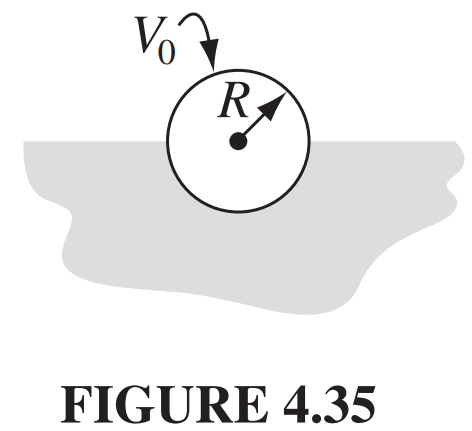Prove the following uniqueness theorem: A volume \nu contains a specified free charge distribution, and various pieces of linear dielectric material, with the susceptibility of each one given. If the potential is specified on the boundaries S of \nu (\nu = 0 at infinity would be suitable) then the potential throughout \nu is uniquely determined. [Hint: Integrate \left.\nabla \cdot\left(V_{3} D _{3}\right) \text { over } \nu .\right]
Question 4.38: Prove the following uniqueness theorem: A volume ν contains ...

The Blue Check Mark means that this solution has been answered and checked by an expert. This guarantees that the final answer is accurate.
Learn more on how we answer questions.
Learn more on how we answer questions.
Given two solutions, V_{1}\left(\text { and } E _{1}=- \nabla V_{1}, D _{1}=\epsilon E _{1}\right) \text { and } V_{2}\left( E _{2}=-\nabla V_{2}, D _{2}=\epsilon E _{2}\right), \text { define } V_{3} \equiv V_{2}-V_{1}\left( E _{3}= E _{2}- E _{1}, D _{3}= D _{2}- D _{1}\right) .
\int_{ \nu } \nabla \cdot\left(V_{3} D _{3}\right) d \tau=\int_{ S } V_{3} D _{3} \cdot d a =0,\left(V_{3}=0 \text { on } S \right), \text { so } \int\left( \nabla V_{3}\right) \cdot D _{3} d \tau+\int V_{3}\left( \nabla \cdot D _{3}\right) d \tau=0 .
But \nabla \cdot D _{3}= \nabla \cdot D _{2}- \nabla \cdot D _{1}=\rho_{f}-\rho_{f}=0, \text { and } \nabla V_{3}= \nabla V_{2}-\nabla V_{1}=- E _{2}+ E _{1}=- E _{3}, \text { so } \int E _{3} \cdot D _{3} d \tau=0 .
But D _{3}= D _{2}- D _{1}=\epsilon E _{2}-\epsilon E _{1}=\epsilon E _{3}, \text { so } \int \epsilon\left(E_{3}\right)^{2} d \tau=0 . \text { But } \epsilon>0, \text { so } E _{3}=0, \text { so } V_{2}-V_{1}=\text { constant } .
But at surface, V_{2}=V_{1}, \text { so } V_{2}=V_{1} everywhere. qed
Related Answered Questions
For an ideal gas, N = Avagadro’s number/22.4 liter...
E _{ ext }=\frac{\lambda}{2 \pi \epsilon_{0...
(a) Doing the (trivial) \phi integr...
(a) Proposed potential: V(r)=V_{0} \frac{R}...
The density of atoms is N=\frac{1}{(4 / 3)...
(a) Eq. 4.5 \Rightarrow F _{2}=\left( p _{2...
Net force is to the right (see diagram). Note that...
In cylindrical coordinates (in the z = 0 plane), [...
(a) According to Eqs. 4.1 and 4.5, F =\alp...